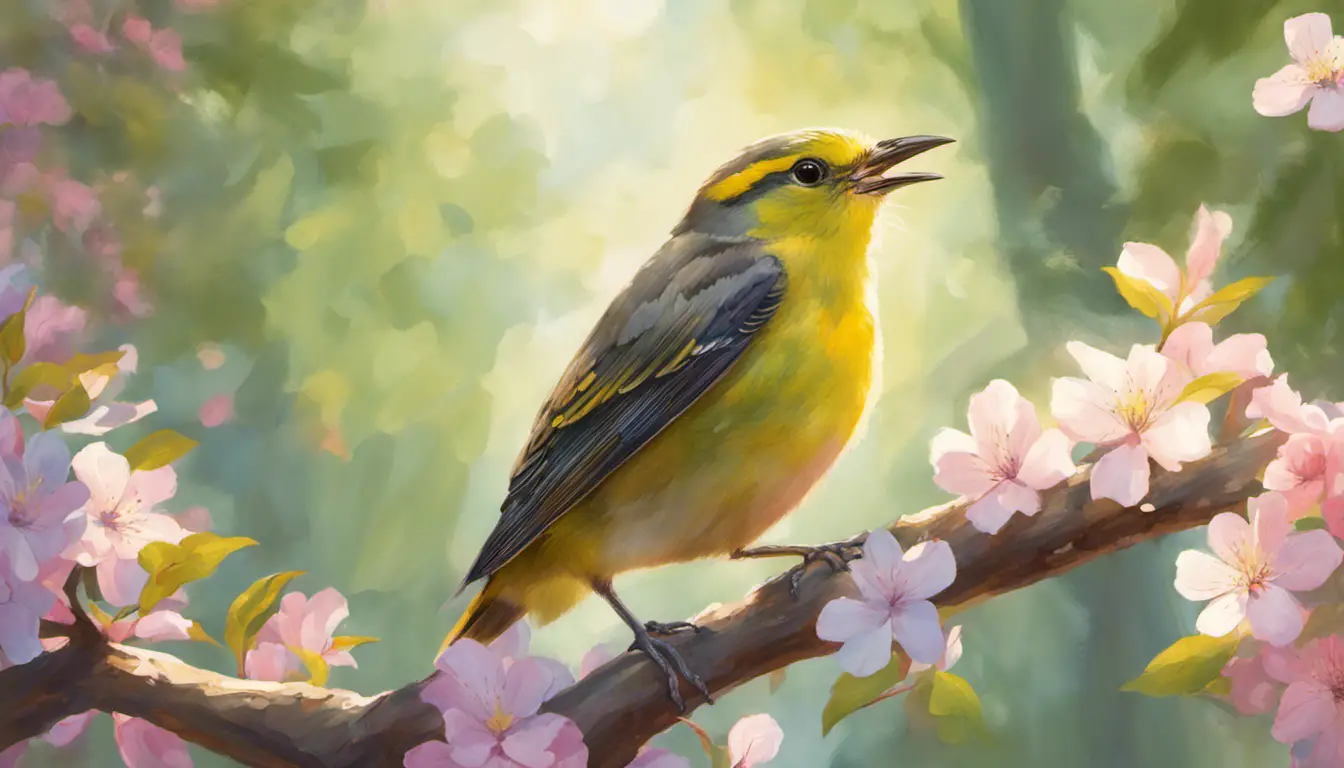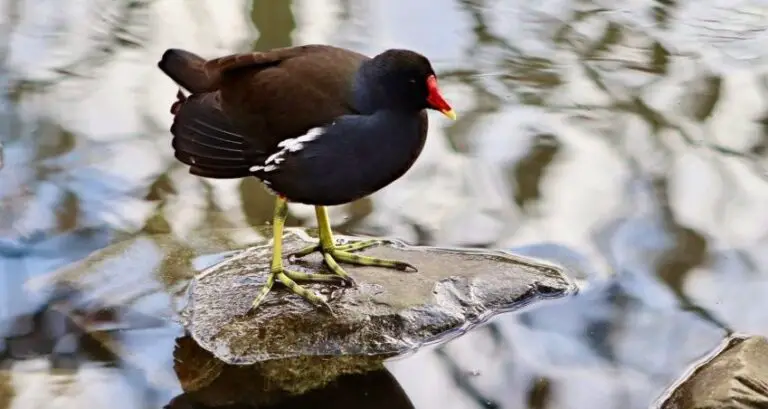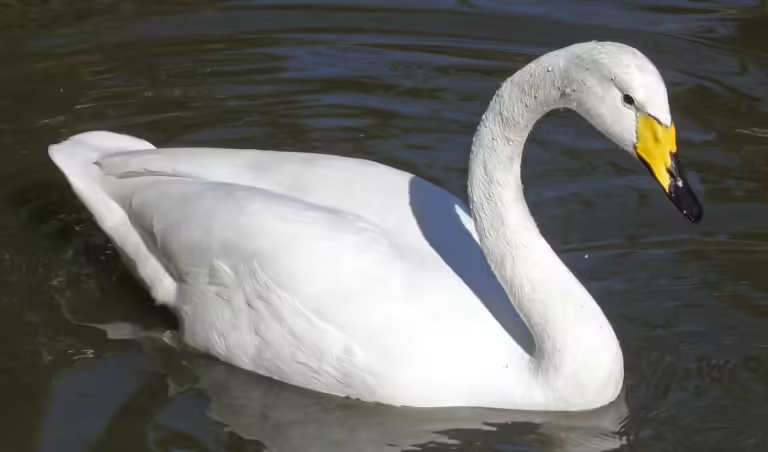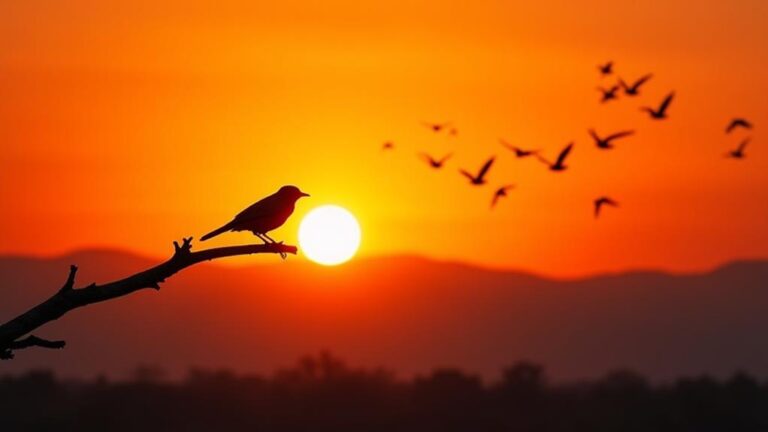Do you ever find yourself captivated by the enchanting melodies of birdsong? If so, you’re in for a treat as we delve into the world of warbler songs. Discover Warbler Sounds: Delight in the melodious tunes of warblers. Explore their unique vocalizations that add a magical touch to nature’s symphony.
These small but mighty birds are renowned for their lyrical tunes that fill the air with a symphony of sounds. From the vibrant trills of the Yellow Warbler to the intricate melodies of the Blackburnian Warbler, each species has its own unique song that will leave you in awe.
In this article, we will explore the fascinating diversity of warbler species and their songs, uncovering the secrets behind their melodic performances. You’ll learn how to identify different warbler songs, discover the role of these songs in their environment, and even gain insights into recording and appreciating these musical wonders.
So, get ready to immerse yourself in the mesmerizing world of warbler songs and revel in the joy they bring to our ears.
Key Takeaways
- Warbler songs are diverse and range from high-pitched trills to sweet flute-like notes, resembling various sounds in nature.
- Warbler songs play a crucial role in communication, mating, and identifying members of their own species.
- The beauty and wonder of warbler songs contribute to the enchantment and harmony of nature.
- Cultural transmission and adaptation of warbler songs ensure the passing down of regional dialects and the unique characteristics of their habitats.
Introduction to Warblers
The enchanting melodies of warblers will captivate you if you pay close attention because it sounds as though they are whispering natural world secrets. These small, vibrantly colored songbirds are known for their distinctive songs that fill the air with joy and wonder. A chorus of warblers, each singing its own distinctive tune, will greet you as you enter the woods.
The songs of warblers are a symphony of sounds, ranging from sweet and melodic to trilling and buzzy. Their voices carry a sense of urgency and passion, as if they are pouring their hearts out into the world. It’s a captivating experience to witness their vocal prowess, as they effortlessly navigate through a wide range of pitches and tones.
One of the most fascinating aspects of warbler songs is their complexity. These birds have an impressive repertoire of melodies, often incorporating trills, whistles, and even imitations of other bird species. The songs can vary greatly between species, making each encounter with a warbler a unique and special experience.
As you listen to the warblers’ songs, you can’t help but be transported to a different realm, where nature’s beauty unfolds before your eyes. Their melodies have the power to soothe your soul and awaken a deep appreciation for the wonders of the natural world. So next time you find yourself in the presence of these lyrical creatures, take a moment to truly listen and revel in the enchanting songs of warblers.
The Diversity of Warbler Species
Amidst the rich tapestry of warbler species, one can appreciate the vast array of melodic calls that fill the air. Each warbler species has its own unique song, creating a symphony of sounds in the bird world.
From the high-pitched trills of the Black-throated Blue Warbler to the sweet, flute-like notes of the Blackburnian Warbler, the diversity of warbler songs is truly remarkable.
Take the American Redstart, for example. Its song is a series of high, clear notes that sound like a musical whistle. It is a distinctive sound that can be heard echoing through the trees as the bird flits about, showing off its vibrant black and orange plumage.
In contrast, the Black-and-White Warbler has a song that resembles a squeaky wheel with its high-pitched, repetitive notes. It is a sound that is hard to ignore and can be heard from a distance.
The beauty of warbler songs lies not only in their melodies but also in their complexity. Some warblers have a repertoire of different songs and can switch between them effortlessly. It is as if they are singing a medley of tunes, showcasing their versatility and vocal prowess.
So, next time you find yourself in the presence of warblers, close your eyes and listen. Let their enchanting melodies transport you to a world of pure bliss as you revel in the lyrical songs of these remarkable birds.
Anatomy of a Warbler Song
In this section, you’ll dive into the anatomy of a warbler song. You’ll explore their vocalizations and song patterns, discovering the importance of their songs in communication and mating. These lyrical melodies play a crucial role in attracting mates and establishing territories.
Get ready to unravel the captivating world of warbler songs and understand their significance in the avian kingdom.
Vocalizations and song patterns
As you stand in a serene forest, you can’t help but be captivated by the warbler’s melodic symphony, a harmonious blend of trills and whistles that dances through the air. The warbler’s vocalizations are a true delight to the ears, with each species having its own unique song pattern. Some warblers sing high-pitched notes that cascade down in rapid succession, while others produce a series of clear and sweet whistles. Certain species incorporate complex trills and warbles into their songs, creating a mesmerizing melody that resonates with nature’s beauty. Listening to these enchanting songs can transport you to a world of tranquility and wonder.
To better understand the variety of warbler songs, let’s dive into the vocalizations and song patterns of five common warbler species:
| Species | Song Pattern | Emotion Elicited |
|---|---|---|
| Yellow Warbler | High-pitched trills | Joyful |
| Black-throated Green Warbler | Whistle followed by trill | Serene |
| Common Yellowthroat | Repeated “witchity-witchity-witchity” | Energetic |
| Blackburnian Warbler | Rapid ascending notes | Excitement |
| Chestnut-sided Warbler | Complex warble with a descending pitch | Melancholy |
Immerse yourself in the symphony of warbler songs, and let their lyrical tunes fill your heart with pure bliss.
Importance of song in communication and mating
In a magical world, the air is filled with an intricate symphony of warbler melodies. Each song serves as a powerful tool for communication and courtship. These melodious tunes are not just beautiful to our ears, but they play a vital role in attracting mates and establishing territories. The warblers use their songs to communicate their presence, defend their territory, and find a suitable partner for mating. Each warbler species has its unique song pattern, making it easier for them to identify members of their own kind. So, next time you hear a warbler’s enchanting melody, remember that it is not just a song but a language of love and survival in the warbler world.
Common Warbler Songs
Picture yourself strolling through the forest, and suddenly a melodious symphony fills the air – that enchanting warbler song, a mesmerizing blend of trills and whistles that captivates your every sense. Warblers are known for their beautiful and diverse songs, each species having its own unique tune. Here are some common warbler songs that you might encounter during your nature walk:
| Warbler Species | Song Description |
|---|---|
| Yellow Warbler | A sweet, high-pitched song that resembles the phrase “sweet, sweet, sweet, I’m so sweet!” |
| Black-throated Green Warbler | A two-part song, starting with a high-pitched “zee-zee-zoo-zoo-zoo” followed by a descending “zee-zee-zee-zoo-zoo” |
| Common Yellowthroat | A distinctive series of musical notes that sounds like “witchity-witchity-witchity-witch” |
These are just a few examples of the enchanting melodies that warblers create. Their songs serve multiple purposes, such as attracting mates, defending territories, and communicating with other warblers. As you continue your walk, let the warbler songs guide you through the forest, allowing their lyrical beauty to transport you to a world of natural wonder and harmony.
Unique Warbler Songs

Let the unique warbler songs transport you to a world of pure auditory enchantment, where the forest resonates with the soul-stirring melodies of these feathered maestros.
Each warbler species has its own distinctive song, making them a true delight for the ears. Take the Black-throated Green Warbler, for example. Its song consists of a series of high-pitched notes that gradually ascend and then descend, creating a mesmerizing musical pattern. As you listen, you can’t help but feel a sense of awe and wonder at the complexity of nature’s symphony.
Then there’s the Blackburnian Warbler, with its striking orange throat and its song that is nothing short of breathtaking. Its vocalizations are a mix of high and low notes, delivered with such precision and clarity that it’s hard not to be captivated.
The song of the Black-and-white Warbler is equally impressive, as it resembles the sound of a buzzing insect. It’s a rhythmic and repetitive tune that echoes through the trees, adding a unique dimension to the chorus of bird songs.
With each warbler species, you’ll discover a new and distinct song that adds to the symphony of nature. So, close your eyes, let the enchanting melodies of these feathered songsters fill your ears, and allow yourself to be transported to a world where beauty and harmony reign supreme.
Warbler Vocalizations and Behavior
Get ready to be amazed by the intricate vocalizations and fascinating behaviors of these tiny songsters. Warblers are known for their diverse and beautiful songs, which are often described as melodic and lyrical. Here are four reasons why warbler vocalizations and behavior are truly captivating:
- Variety: Warblers have an impressive repertoire of songs, with each species having its own unique vocalization. From trills and whistles to complex melodies, their songs are a true delight to the ears.
- Complexity: Warbler songs are not only diverse but also incredibly intricate. These birds can produce a wide range of notes and incorporate complex patterns into their songs. Listening to their songs is like unraveling a musical puzzle.
- Males’ Singing: Male warblers use their songs to attract mates and defend their territory. They sing with great enthusiasm and can often be heard singing from the treetops, showcasing their vocal prowess.
- Behavioral Displays: Warblers are not just exceptional singers; they also exhibit fascinating behaviors. They can be seen hopping from branch to branch, gleaning insects from leaves, and performing acrobatic maneuvers in pursuit of their prey. Observing their energetic and agile movements is a spectacle in itself.
So, next time you find yourself in the presence of a warbler, take a moment to appreciate their incredible vocalizations and captivating behaviors. It’s a sure way to immerse yourself in the beauty of nature’s symphony.
Warbler Song Learning and Cultural Transmission
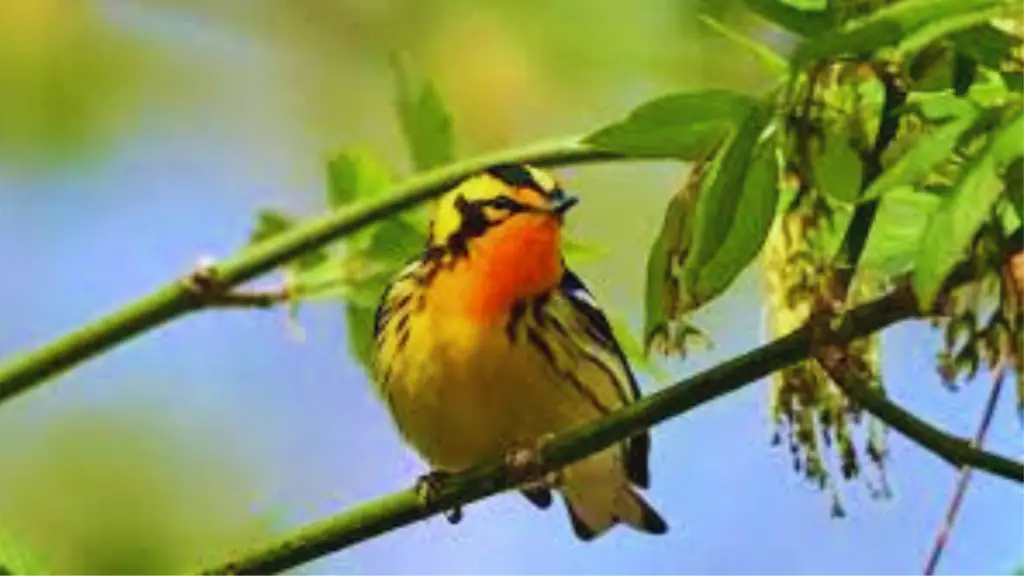
Now that you’ve learned about the fascinating vocalizations and behavior of warblers, let’s dive deeper into their enchanting songs and how they learn them.
Warbler song learning is a captivating process that involves cultural transmission among individuals.
Like humans, warblers have a remarkable ability to learn and imitate various songs. As fledglings, they start by listening to and memorizing the songs of adult birds around them. Through a combination of trial and error, practice, and imitation, they gradually develop their own unique repertoire of songs.
Cultural transmission plays a significant role in warbler song learning. Young warblers primarily learn songs from established adult males, who act as vocal role models within their communities. This cultural transmission ensures that the distinct regional dialects and song types are passed down from one generation to the next.
Interestingly, warblers also possess the ability to modify and adapt their songs over time. As they interact with neighboring warbler populations, they may incorporate elements from different dialects, creating a blend of melodies that reflect their diverse influences.
So, next time you find yourself in the presence of warblers, take a moment to appreciate the intricate process behind their melodious tunes. It’s a testament to the rich cultural heritage and the unique song learning abilities of these remarkable birds.
Warbler Songs and the Environment
Amidst the vibrant tapestry of nature’s symphony, warbler songs harmonize with the environment, weaving together melodies that reflect the hidden secrets of their lush habitats. These small songbirds have an incredible ability to adapt their songs to suit their surroundings, creating a unique musical experience for both themselves and the listeners. The intricate melodies resonate through the dense foliage, carrying the essence of the surrounding landscape.
In order to fully appreciate the connection between warbler songs and their environment, let’s take a closer look at the table below:
| Warbler Species | Habitat | Song Characteristics |
|---|---|---|
| Yellow Warbler | Wetlands | Sweet, high-pitched notes that mimic the sound of flowing water |
| Black-throated Green Warbler | Deciduous forests | Rich, flute-like trills that blend with the rustling leaves |
| Blackburnian Warbler | Coniferous forests | Piercing, high-pitched songs that resonate through the tall trees |
| Prairie Warbler | Grasslands | Complex, buzzy songs that mimic the sounds of insects and grasses |
As you can see, each warbler species has adapted its song to match the unique characteristics of its habitat. This remarkable ability allows them to blend seamlessly into the natural soundscape, creating a beautiful harmony that is a testament to their adaptability and the wonders of the natural world. So, next time you find yourself in a warbler’s habitat, take a moment to listen and let their songs transport you into the heart of nature’s symphony.
Recording and Identifying Warbler Songs
Intriguingly, capturing and deciphering the enchanting melodies of warbler songs presents a thrilling challenge for bird enthusiasts and researchers alike. These small, vibrant birds have a diverse repertoire of songs that are as beautiful as they are complex.
To record and identify warbler songs, here are a few key steps to follow:
- Choose the right equipment: A high-quality microphone and a portable recorder are essential for capturing the subtle nuances of warbler songs. Make sure to select equipment that is sensitive enough to pick up the intricate details of their melodies.
- Find the perfect location: Warblers are known for their preference for dense vegetation, so it’s important to search for them in habitats like forests, wetlands, or shrubby areas. Look for areas with a variety of tree species, as different warblers prefer different habitats.
- Listen attentively: Warblers have distinctive songs that are characterized by rapid, high-pitched notes. Take the time to familiarize yourself with their songs by listening to recordings or using bird identification apps. Pay attention to variations in pitch, rhythm, and length of the songs.
- Compare and analyze: Once you have recorded warbler songs, compare them to existing recordings or consult with experienced birders to help with identification. Look for similarities and differences in the songs to narrow down the possibilities and determine the species.
By following these steps, you can immerse yourself in the enchanting world of warbler songs and contribute to our understanding of these remarkable birds.
Enjoying and Appreciating Warbler Songs
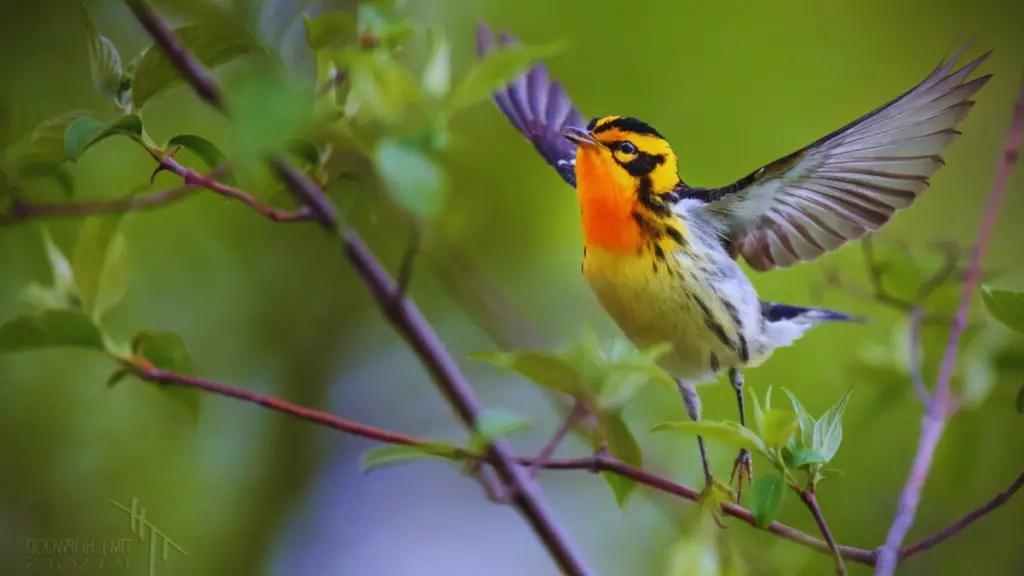
Immerse yourself in the captivating melodies of nature’s delicate musicians and appreciate the enchanting symphony they create. As you listen to the songs of warblers, you will be transported to a world of pure bliss.
These tiny birds, with their vibrant colors and melodious voices, have the ability to evoke a sense of wonder and joy.
Close your eyes and let the warbler songs surround you. Their tunes, ranging from high-pitched trills to soft whistles, fill the air with a symphony of sound. Each species has its own unique song, making it a delightful challenge to identify them by their distinctive melodies.
As you savor the warbler songs, you will notice the intricate patterns and complex sequences they create. Their songs are like a language, with different notes and rhythms serving different purposes. Some warblers use their songs to attract mates, while others use them to defend their territory.
Take a moment to appreciate the effort and skill that goes into each warbler song. These delicate creatures put their heart and soul into their musical performances, and it is a privilege to be able to witness their artistry.
So, next time you find yourself in the presence of warblers, take a moment to truly listen. Let their songs transport you to a world of beauty and serenity, and revel in the lyrical magic that only these tiny birds can create.
The Musical Wonders of Warblers
Let yourself be transported to a world of enchanting beauty as you witness the captivating melodies and intricate symphonies created by these tiny, vibrant creatures. Warblers, with their melodious songs, have the power to captivate and mesmerize anyone who takes the time to listen.
Here are three ways to fully appreciate and enjoy the musical wonders of warblers:
- Take a moment to close your eyes and listen to the warbler’s song. Let the intricate notes and trills wash over you, transporting you to a serene and peaceful place. Each species of warbler has its unique song, ranging from sweet and melodious to rapid and complex. Listen closely, and you might even hear their incredible mimicry of other bird calls.
- Grab a pair of binoculars and head out to a nearby park or forest. Warblers are known for their vibrant colors, and watching them flit from branch to branch while singing their hearts out is a sight to behold. Keep your eyes peeled for their distinctive patterns and bright plumage, as they blend in perfectly with their surroundings.
- Immerse yourself in the world of warbler songs by listening to recordings or joining a birdwatching group. There are numerous online resources available that showcase the variety of warbler songs, allowing you to appreciate their diversity and complexity. Being part of a birdwatching group can also provide valuable insights and a shared passion for these musical wonders.
So, let the captivating melodies of warblers fill your ears, and let yourself be transported to a world of pure auditory bliss.
Warbler Sounds: Frequently Asked Questions
How do warbler songs differ from other bird songs?
Warbler songs are distinct from other bird songs. They are known for their intricate melodies, high-pitched trills, and rapid-fire notes. You’ll be captivated by their unique tunes, which set them apart in the avian world.
Can warblers mimic other bird species in their songs?
Warblers, known for their diverse songs, have the ability to mimic other bird species. For instance, the Yellow Warbler has been observed imitating the songs of other birds, adding a unique twist to their own repertoire.
Do male and female warblers sing different songs?
Male and female warblers do not sing different songs. They both produce beautiful, melodic tunes that are unique to their species. It is a joy to listen to the lyrical songs of these birds.
Are warbler songs used for communication beyond attracting mates?
Warbler songs serve a purpose beyond attracting mates. These melodic tunes are used for communication, signaling territory boundaries, warning others of predators, and even coordinating group movements.
Can warblers change their songs over time?
Warblers can change their songs over time. They may alter their melodies or add new notes as they mature or when they encounter different environmental conditions. These adaptations help them communicate more effectively and enhance their chances of survival.
Conclusion: Warbler Sounds
What does a warbler sound like? Reveling in the lyrical songs of these birds.
Warblers are truly the rock stars of the avian world. Their melodic tunes and impressive vocal range will transport you to a world of pure auditory bliss. From the haunting melodies of the Black-throated Blue Warbler to the cheerful trills of the Yellow Warbler, these tiny songsters never fail to amaze.
So grab your binoculars, head out into nature, and let the lyrical warbler songs serenade your soul. You’ll be grooving to their beats in no time!
Rock on, bird lovers!

